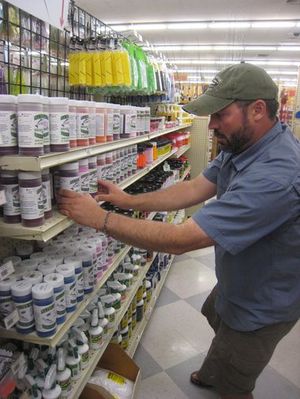Oregon gets fishing bait makers to limit use of harmful chemical
FISHING -- Should the manufacturers of artificial fishing baits and egg cures use a chemical that kills small fish?
Seems like a no-brainer, but Oregon is the first state in the region to deal with the issue
The Oregon Department of Fish and Wildlife reached an agreement last week with fish bait manufacturers to limit, but not end, their use of sodium sulfite, a popular preservative that's been found to be lethal to small fish in high doses.
Upon final approval, all cures manufactured for sale in Oregon after Oct. 1 must have a reduced level of sodium sulfite. Products will be labeled "meets Oregon guidelines."
Read on for the rest of the story by Bill Monroe of the Oregonian.
Limitations on sodium sulfite will be voluntary and apply only to commercial cures sold in Oregon, not to individual anglers. Nor will the sale of pure sodium sulfite be banned.
The tentative agreement ends a year of negotiations with the growing egg-cure industry after an initial announcement by the department that all sodium sulfite should be removed from commercial cures.
Salmon and steelhead eggs have long been a favorite bait for anglers, who save the roe from their catches and for decades preserved it with borax and other relatively non-toxic methods.
Clusters of eggs on hooks are used to fish for salmon and steelhead, but also attract baby salmon, steelhead and trout (among other fish), which either nibble on the mass or eat individual eggs that break loose.
In the 1980s, sodium sulfite entered the picture as an effective bait preservative and has become a principle ingredient in a wide array of commercially prepared cures and eggs. Cures, usually powdered, are the best sellers, offering do-it-yourself anglers the opportunity to experiment with their own additives.
Formulas, commercial and private, are typically closely guarded secrets, but most include some level of sodium sulfite.
Concern for juvenile fish and sodium sulfite came to the forefront in 2008, when the Department of Fish and Wildlife was asked how much juvenile mortality it caused.
Testing at the department's Oregon Hatchery Research Center, announced in late 2009, showed sodium sulfite toxic to some of the juvenile fish at levels between 15 and 50 (the highest dosage tested) grams per kilogram.
Monday's agreement allows manufacturers to use up to 12 grams per kilogram, tested at levels within individual eggs.
That, department officials said, should result in negligible mortalities, although the official language is "less than 10 percent" of juveniles ingesting the eggs.
The agreement, they said, satisfies those who raised the concerns in the first place and will put the issue to rest, pending commission approval.
Commission members will be asked to approve the voluntary agreement, but have the option of putting it into state law. If the commission opts for rule-making, that process would delay the Oct. 1 date.
Jessica Sall, a department spokeswoman, said Thursday that a publicity campaign will help educate the public about the issue and the new rule.
Liz Hamilton, executive director of the Northwest Sportfishing Industry Association, downplayed the continued sale of pure sodium sulfite and voluntary nature of the agreement.
"I've worked with fishermen for multiple decades," she said. "I've learned that once they know it's the right thing to do, they're going to do it."

